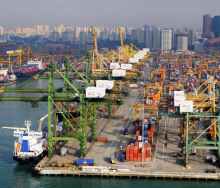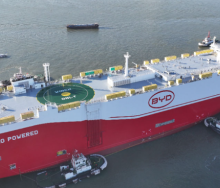As expected, after two record years for the shipping lines, the market is moving into a post-pandemic reality – and shippers are moving back into the driving seat.
“While 2022-Q4 gave us a first glimpse of what this might look like, 2023-Q1 was the first quarter where the carriers’ operating profits took a real hit,” says Alan Murphy, CEO of maritime consultancy Sea-Intelligence.
“This continued into 2023-Q2, with the combined Ebit (earnings before interest and taxes) dropping by -90% year-on-year to a little over $3 billion. Further to that, both ZIM and Wan Hai once again recorded an operating loss.”
Murphy points out that none of these shipping lines were able to sustain their Ebit/TEU figures in 2023, with the largest 2023-Q2 Ebit/TEU recorded by OOCL of $305/TEU. In contrast, the smallest Ebit/TEU in 2022-Q2 was $1 377/TEU. Maersk ($207/TEU), Hapag-Lloyd ($298/TEU), and ONE ($137/TEU) all recorded Ebit/TEU within a much narrower range of $130-300/TEU. ZIM, in the meantime, recorded a negative Ebit/TEU of -$195/TEU. “Basically, they lost $195 for every TEU that they moved in 2023-Q2.”
The decline in profitability correlates with the decrease in the freight rates, which dropped by -48% to -67% across the shipping lines that publish these figures. “Another reason is the decline in transported volumes,” says Murphy. “What is surprising, however, is that ZIM, one of the only two shipping lines to record an Ebit loss, grew their volumes 0.5% globally, and by roughly 13% on both Transpacific and Asia-Europe.”













